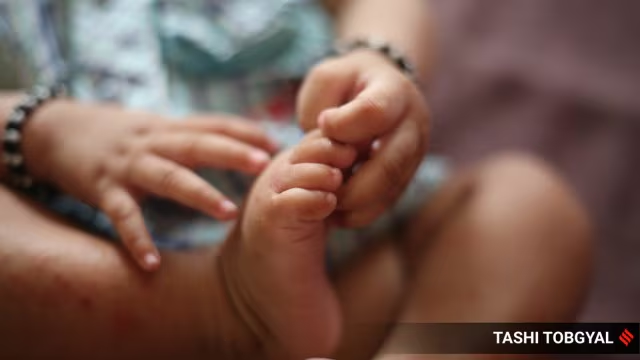It’s 9:48 pm. As I put my eight-month-old to bed, my lower back and frozen shoulders sigh: One more day down. I wonder why everyone says, “They grow up too fast!”.
I go over my mental to-do list for the day to gauge how I fared with the baby:
Protein: Check
Fruits and vegetables: Check
Supplements: Check
Learning and development through toys and activities: Check
Exposure to nature and socialising through stroller walk: Check
Exposure to music by playing baby Mozart and Indian devotional songs: Check
Diaper-free time: Check
However, there’s always room to learn, and do more and better when it comes to a baby. So, I open a moms’ group on WhatsApp meant for discussions about newborn to about six-month-old babies. On this group, I have found recommendations for the best wet wipe, inquired about others’ experiences in dealing with their children’s constipation, got educated about products like steriliser bags which I didn’t know about, and more. This group (and others on social media) consists of moms. Period. They could be mothers through the biological route or adoption or surrogacy. There is no mention as to which mom is an adoptive parent and hence no way to know otherwise. Moms are moms. Except that I learnt our trials and tribulations are very different.
I underwent IVF cycles which were torturous on my mind and body both. My friends and relatives who have carried babies in their womb tell me that the dreamy baby-bump photoshoots are a fraud. The reality is nausea, back pain, and an unwieldy body.
In the adoptive-parent community, we guesstimate when our bundle will arrive based on when our peers with similar dates of registration and choices, like the age bracket of the child, received theirs. My “pregnancy” was so smooth that I didn’t even realise when I was in my first trimester, second trimester, third trimester or had already popped the baby as the child matched with us could be of any age within the chosen two-year bracket.
If the birthing complications, labour pain, and physical recovery from a C-section were not enough, I learnt from the Whatsapp group about the complications in breastfeeding. On one hand were the full-spectrum issues on the demand (baby) side from hard latch to breast refusal whereas on the supply side were problems ranging from low to excess milk production (leading to a serious medical condition called mastitis). And then there was the pumping and correct storing of milk to match the demand and supply. I was happy I didn’t have to put my mind into buying the right breast-pump or consulting a lactation expert. I would gleefully skim through the majority of the messages, mentally checking them off as non-applicable. However, I wondered if our greatest pain-point in life was justified: Getting up once in the middle of the night, reaching for the Dr Brown’s bottle on the bedside table, pouring lukewarm water in it from a thermos, downing pre-measured formula into it, shaking the bottle, and dunking it in the baby’s mouth.
One avenue for respite for the mother could be savouring food and beverages that she enjoys but apparently the baby’s colic doesn’t like the exact same menu. A breastfeeding mom shared on the group that she detected that wheat and coffee made her baby cry incessantly and so she had to eliminate those from her diet. Interestingly, colic bids farewell at about three months of age and that is the earliest that a child becomes legally free for adoption: It takes a couple of months for the child to be registered in the adoption system after ensuring there is no claim from his/her family. We were blessed with our daughter when she was a quarter of a year old and we both have lived happily ever after: She is relishing her formula milk and I have enjoyed not having to follow any formula. I continue to devour my papdi chaat (a tangy and spicy snack) and masala chai guilt-free. To each her own (gas).
Adoption may entail a long wait to get the baby in your arms, but I thought it’s a shortcut to all of the above. So whenever I feel like I’m dealing with a lot, I surf the Whatsapp group and sleep peacefully: Feeling a deep respect for biological moms and gratitude that I’m not one.
(Read the article on Indian Express website here!)












